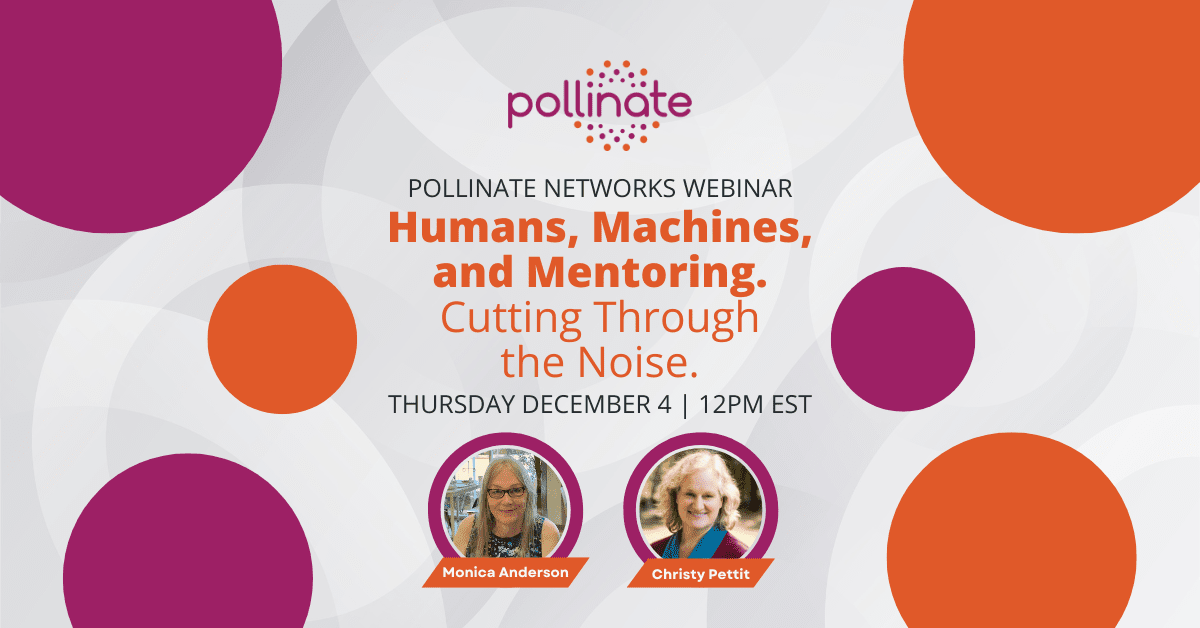
With the COVID-19 pandemic entering a fourth wave and the future uncertain, people want certainty more than ever. Believe me when I say that’s definitely true in business environments.
I mentioned in a previous Pollinate article that process-driven environments are becoming obsolete in a world that is adjusting to hybrid and remote workplaces. Results are now more important than the process. Many employers have adjusted to the pandemic by making it possible for their employees to explore flexible work arrangements that enable them to adjust their schedules and get their work done when and where they can.
Managers must be able to depend on their employees to complete their tasks when physical oversight is simply not possible. That puts a significant onus on workers, who must be more self-reliant and committed to completing their tasks.
This isn’t to say that the process has lost all importance, and good managers recognize this. There are a number of ways they can build and facilitate a results-based workplace that both relies on and excels in team building, mentoring, and team dynamics.
This article will outline and explain four steps that give teams a much better chance of hybrid work success – and certainty – constructed around the idea that everything that needs to happen is a project. It’s a simple concept, but a good understanding of that concept is crucial.
1. Clearly define deliverables
At Pollinate, our beliefs regarding results-based workplace teams are different from most others’. Everyone else in the field is thinking timelines, checklists, tactics, etc. These are still important elements, but there’s a lot more to it than that.
According to Investopedia, a typical industry definition of “deliverables” is “the quantifiable goods or services that must be provided upon the completion of a project.” A deliverable can be a tangible item, such as the acquisition of new office equipment or something else that may be used at work. It can also be intangible, such as the installation and implementation of a new computer program, segmentation of a new target market or perhaps a new workplace policy.
In our world, for this purpose, defining deliverables leans more toward the intangible. First of all, what are the roles and responsibilities of each member of your team? Who will be counted on for visioning the work, understanding the work, and physically doing the work? What does success in the project look like?
Care must be taken to ensure that these deliverables are realistic, that they are clearly articulated, and that they are achievable. It’s also very important to ensure that certain people on the team understand if they’re doing a visioning thing or a tactical thing.
Regardless of their role, the whole team needs to have a commitment to the intangible aspects of the project. If that means participating in regular project update meetings to report on deliverables and discuss the overall plan, then that’s what has to happen. This could also mean pivoting parts of the project over time to reflect ever-changing market conditions in an effort to achieve the best possible results.
A person may only be one small piece of the puzzle, but they must always keep the whole puzzle in mind; it’s not complete without them. Successfully completing the puzzle – that’s teamwork. Even in the freelance economy, where flex work is the norm and it’s true that many tasks can be completed outside of regular business hours, there is still a responsibility to an overall picture.
2. Plan the project
Project planning has a number of steps in itself. The most important thing is that the person or team in charge of planning must be empowered to create their plan task by task, with a timeline.
Another major element is team building – assessing the skillsets of team members and choosing the right people for the right task. A flexible, individualized approach is key to effective team building. A good manager knows the people they work with, including their strengths and weaknesses, and should be able to make a first solid attempt at putting the right people together based on that knowledge.
Pollinate helps take that process to another level with our validated Knowledge Transfer Index psychometric assessment, which reveals individual preferences for working and learning together, whether in person or virtually. The KTI is a vital component of our Cross-Pollinate AI™ matching process, which uses a proprietary algorithm to match people for agile and effective teams, mentoring programs and more expansive networks or ecosystems.
A completed plan is not necessarily the final plan. Dates and details change, and an agile workplace must have the ability to adapt as needed. Review your plan in detail and massage it daily. If it needs to change and shift, let it happen, but continue to make sure that team members are still accountable for it and that the ultimate objective of the project is being achieved.
Much of their accountability can be rooted in their ownership of the project. Encourage discussion and debate and solicit suggestions for different ways to approach or to proceed. Ask: Are you staying on track? Are you staying within your scope? These questions contribute to effective team dynamics. If people are heard, they feel respected and they have ownership. With ownership, people are empowered. And empowered people are invariably committed to doing the best work they can in their role.
3. Establish checkpoints
As mentioned above, a plan should be reviewed and updated regularly. This is also true of the project itself – what the plan is intended to do in the first place.
Checkpoints are absolutely essential. They should be scheduled at regular intervals, whether hourly, daily, weekly, twice weekly, biweekly, monthly, or whenever. Keep in mind that it’s easy to cancel a meeting if necessary, if you decide you don’t need it and you want to give back time to your team. But it’s nearly impossible to schedule a meeting once the project is underway.
The goal of checkpoints is to focus on the overarching deliverable as well as the specific tasks at hand. These checkpoints shouldn’t be overbearing or onerous, with people going around the table and each giving a detailed recap. Instead, checkpoints should be flexible and focused on steps in the immediate past and future. What do we need to talk about right now? What are our priorities? What are our concerns? Are there any red flags that have to be addressed first?
These discussions should be to the point, and they should succinctly give way to the next topic. If specific team members do need a detailed recap of anything or everything in order to have a renewed clear picture, time can be made for that, and these employees should be encouraged to take advantage of that time and opportunity.
Again, hearing people gives them respect, ownership, and empowerment. I mentioned in my last article that empowerment is the key to flex work success, and it bears repeating. I’ll explain now how empowerment can go to an even higher level.
4. Debrief the project
After a project has been completed, it’s extremely important to have a debriefing session or sessions. This step is where a team can talk about what went right, what went wrong, and more. Did something work or did something fail? Can you find out why, in either case?
The team should continue to be empowered through this process. Team members can each identify and discuss what they believe could have been improved or approached differently. They should be accountable for documenting these issues as they arise and bringing them to the rest of the team’s attention at the project’s end.
Debriefing takes place at the team level, but key members of the team can be assigned to go further on certain action items or improvement initiatives. This next level of empowerment gives these team members the opportunity to become subject matter experts. If they include people who maybe would not previously have received that kind of opportunity, this effectively disperses the load carried by the team members. It gives you more heavy hitters on your team while also creating bench strength. This load dispersal and strength come in handy when everyone might otherwise feel like they’re hitting the wall.
Conclusion
I said at the beginning of this article that results are now more important than the process in hybrid or remote workplaces. Results-oriented work is more than just the delivery of a finished product.
Actually, it’s not even about simply delivering a finished product; it’s about delivering the right finished product and meeting the objective of that finished product. Many people working in institutions, government, and other service jobs are overly focused on checklists – get it out the door and check it off the list. But, too often, they’re not thinking about whether or not they’re getting the right thing out the door and off the checklist.
In a results-based workplace, on the other hand, everyone is clear on the need for constant collaboration and committed to changing and pivoting as necessary to meet the shifting needs of the marketplace.

Cindy Collins
Cindy Collins is Director, Client Delivery, at Pollinate Networks Inc. Her role is to provide project management expertise through the sales end delivery system. This involves understanding clients and their needs intuitively and managing the sharing of that knowledge throughout the Pollinate team.
As a business development strategist and project management expert, Cindy has spent the last 15+ years developing and implementing sales and marketing strategies for various markets and industries throughout North America.




